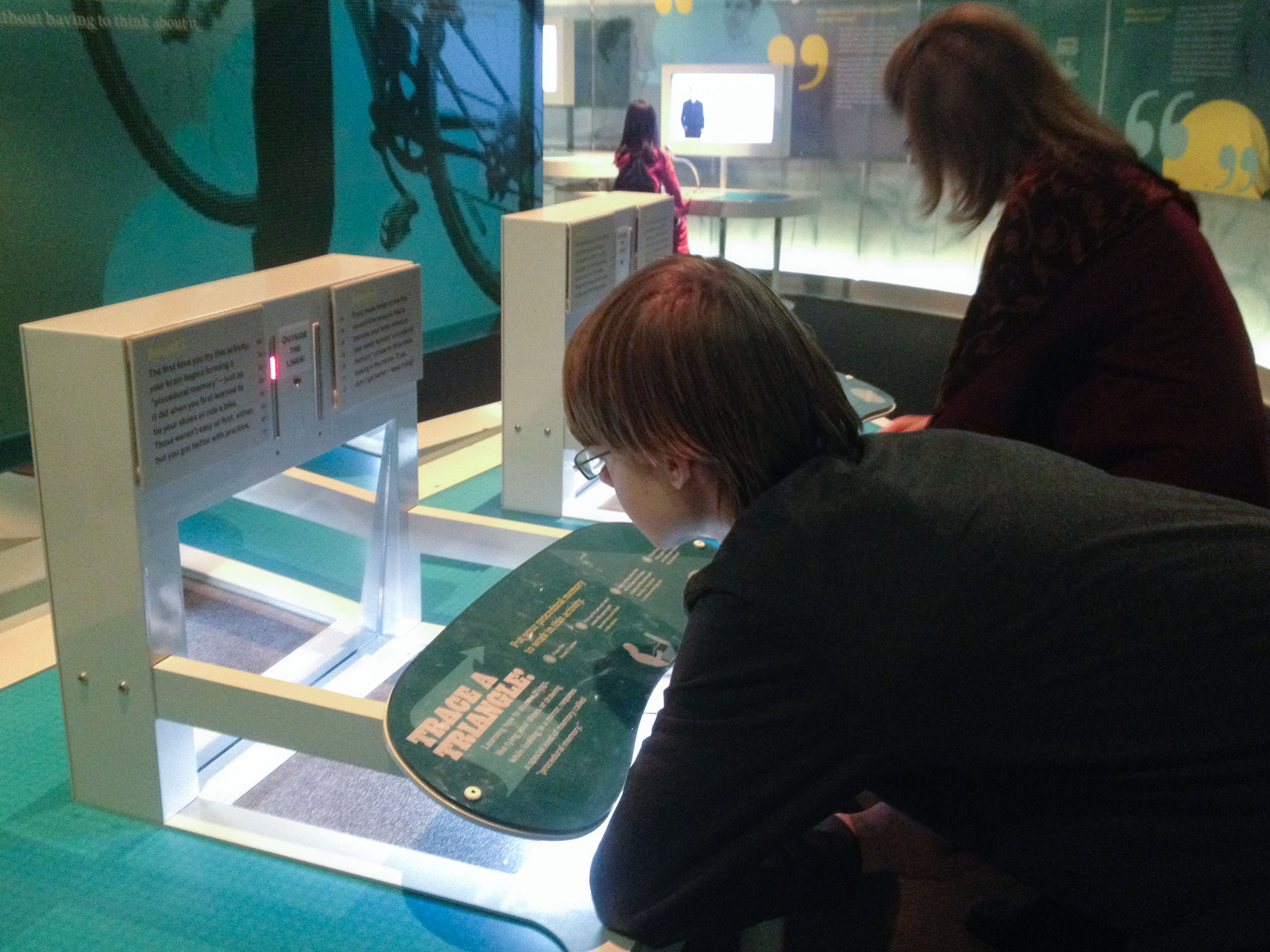
Ontario Science Centre brings the brain to life
 Felix is a highschool student from Toronto
Felix is a highschool student from Toronto
I was invited to get a peek at the brand new Ontario Science Center exhibit about the most complicated piece of machinery on our planet: the brain.
Upon admission into the exhibit, the noise of crackling wires greeted us. An immense canopy of wires created an eerie atmosphere. It was overwhelming, the immense size and knowing that it represented our brain. And then I fell upon my favourite piece of the exhibit; a sculpture of a homunculus – small humanoid creature – with exaggerated hands and facial features and held up by two thin legs. It was meant to represent how the brain is called upon when we use our senses, the size increasing by how much we need it for that particular sense. For example the hands were grossly enlarged as we can feel more on our hands than, for example, the elbow…
Further into the exhibit we got to see the evolution of the brain. Beginning with single cell organisms with no brain at all, the brain slowly evolved and changed, splitting off between different species along the way. I had never realized how vastly each animal’s brain differed in shape.
The human brain is almost a mix of many different brains. For example, the cerebrum, or the folds that are mostly situated on the outer parts of the brain, is similar to a monkey’s while other parts are more similar to a lizard’s.
 Then we saw how drugs and diseases affect the human brain. Drugs like cocaine block the removal of dopamine, the chemical that makes you happy, creating excess levels in the brain. Other drugs like caffeine prevent adenosine, the chemical that makes you sleepy, from getting to the receptors and preventing you from feeling tired.
Then we saw how drugs and diseases affect the human brain. Drugs like cocaine block the removal of dopamine, the chemical that makes you happy, creating excess levels in the brain. Other drugs like caffeine prevent adenosine, the chemical that makes you sleepy, from getting to the receptors and preventing you from feeling tired.
In this area was also a part about Alzheimer’s disease. It was scary. The display showed what a normal brain looked like versus the brain of someone with Alzheimer’s. The brain with Alzheimer’s seemed to have shrunk and shrivelled up. It made the disease feel so real…
Towards the end, various games meant to show the functions of your brain such as learning and memory were set up. Other stations had exercises to train and improve your brain with tasks such as spatial recall and problem solving.
One of the displays represented memory of London taxi drivers. People trying to become taxi drivers in London (England) have to memorize many different routes, taking note of the fastest one, then reciting them off the top of their head for a test before being allowed to drive a taxi. We were told that while taxi drivers know the most about the routes, the tourists often knew more about the city’s layout than the bus drivers. That’s because tourists are paying attention not to get lost, while bus drivers only need to know their own route and often get into a mechanical routine…
By then, we had been in the exhibit for well over an hour. The exhibit was a really interesting experience, and I really suggest all people go see it, at least to get a good look at the homunculus!